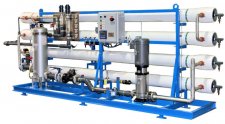Assign modules on offcanvas module position to make them visible in the sidebar.
Main Menu
Sepcial Promotion
Reverse osmosis (RO) and nanofiltration (NF) membrane plants used for brackish water (total dissolved solids (TDS) ¼ 500–10,000 ppm) desalination and industrial water (TDS ¼ 100–500 ppm) purification generate large quantities of concentrated brine that is a disposal problem, especially, when the plants are located inland. Increasingly, industrial plants are required to generate minimal liquid discharge in order to obtain plant operating licenses from their local governments. Because of high costs of disposing brine, and the need to reclaim and conserve water, primary RO (PRO) reject water is sometimes polished with a brine RO (BRO) system to recover additional potable water and reduce the volume of brine stream. Such PRO þ BRO hybrid systems can achieve overall product water recoveries (OPWR) of up to 90%. However, OPWR ≥ 95% are required. Several alternate NF and RO process flow designs were developed using membrane manufacturers’ performance projections software deploying reject data from industrial PRO plants varying in flow rates between 30 and 300 m3/h. The design data show that for brine streams of low to medium brackish water quality, OPWR ≥ 95% is achieved with minimal chemical pre-treatment (acidification and anti-scalant addition). In addition, the process utililises stateof- the-art membrane technologies, does not generate solid waste, has a small foot-print and is easy to scale-up.



